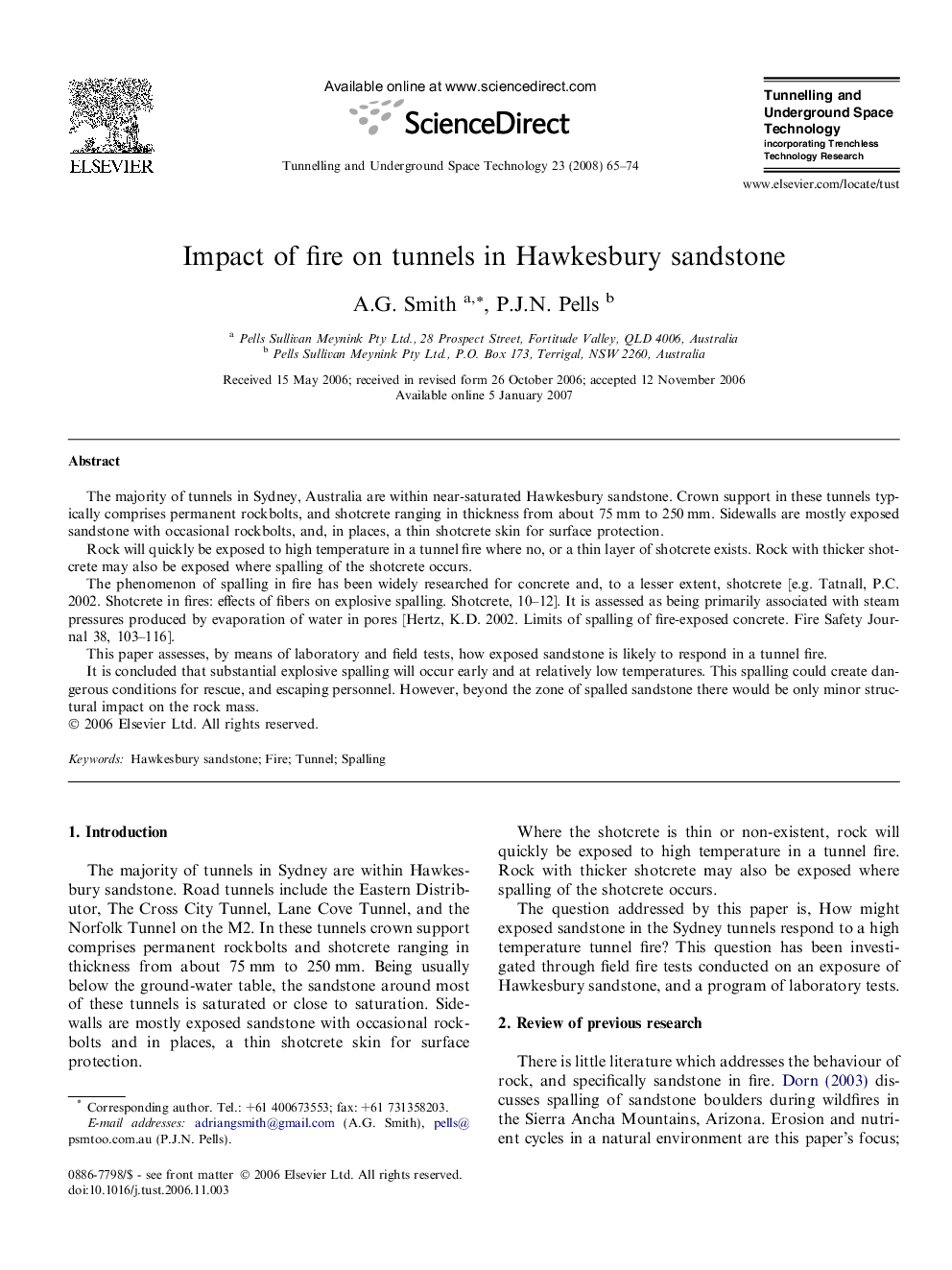| Article ID | Journal | Published Year | Pages | File Type |
|---|---|---|---|---|
| 312068 | Tunnelling and Underground Space Technology | 2008 | 10 Pages |
The majority of tunnels in Sydney, Australia are within near-saturated Hawkesbury sandstone. Crown support in these tunnels typically comprises permanent rockbolts, and shotcrete ranging in thickness from about 75 mm to 250 mm. Sidewalls are mostly exposed sandstone with occasional rockbolts, and, in places, a thin shotcrete skin for surface protection.Rock will quickly be exposed to high temperature in a tunnel fire where no, or a thin layer of shotcrete exists. Rock with thicker shotcrete may also be exposed where spalling of the shotcrete occurs.The phenomenon of spalling in fire has been widely researched for concrete and, to a lesser extent, shotcrete [e.g. Tatnall, P.C. 2002. Shotcrete in fires: effects of fibers on explosive spalling. Shotcrete, 10–12]. It is assessed as being primarily associated with steam pressures produced by evaporation of water in pores [Hertz, K.D. 2002. Limits of spalling of fire-exposed concrete. Fire Safety Journal 38, 103–116].This paper assesses, by means of laboratory and field tests, how exposed sandstone is likely to respond in a tunnel fire.It is concluded that substantial explosive spalling will occur early and at relatively low temperatures. This spalling could create dangerous conditions for rescue, and escaping personnel. However, beyond the zone of spalled sandstone there would be only minor structural impact on the rock mass.
